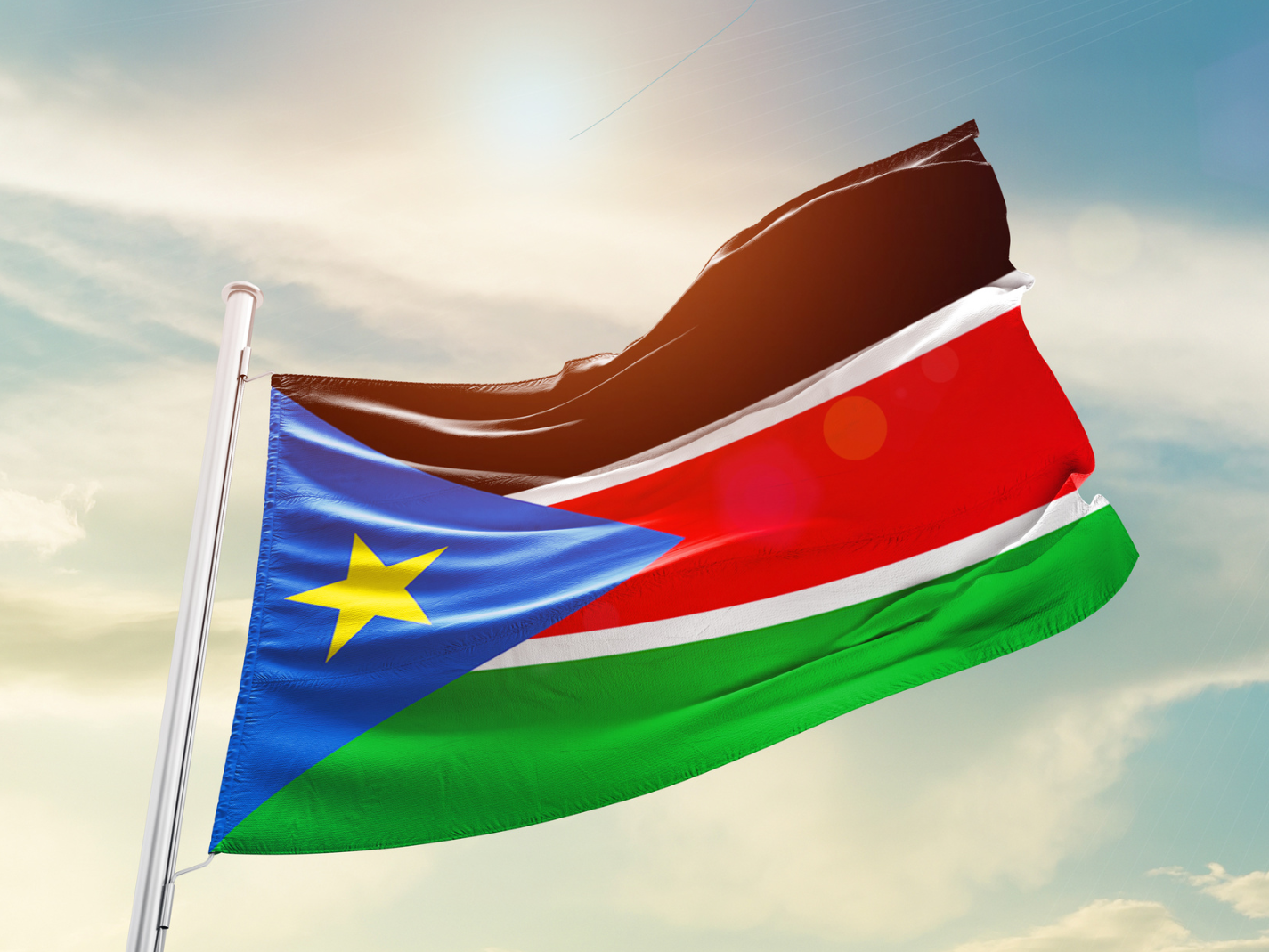
Editor’s Note: This piece is part of a new Minding the Campus article series called Minding the Sciences, wherein we are renewing our focus on the sciences given the many threats it faces in modern academia. Click here to learn more.
In April, David Muir of ABC News broadcast a special report from South Sudan, which featured the efforts of the United Nations World Food Programme (WFP) to stave off famine in the country’s northern provinces.
What caught my ear was Muir’s claim that South Sudan is the “new front line of the climate crisis.” Muir was echoing the WFP’s narrative. “Unprecedented flooding” has displaced tens of thousands of people. The flooding has interfered with agriculture and has disrupted the timely delivery of food, goods, and services that could otherwise prevent starvation. Nearly eight million people are said to be at risk.
One’s skeptical ears should prick up whenever the phrase “climate crisis” is trotted out, because it is a blatantly political term. The phrase was background noise until the Global Climate Strike and the coordinated UN Climate Action Summit in September 2019.
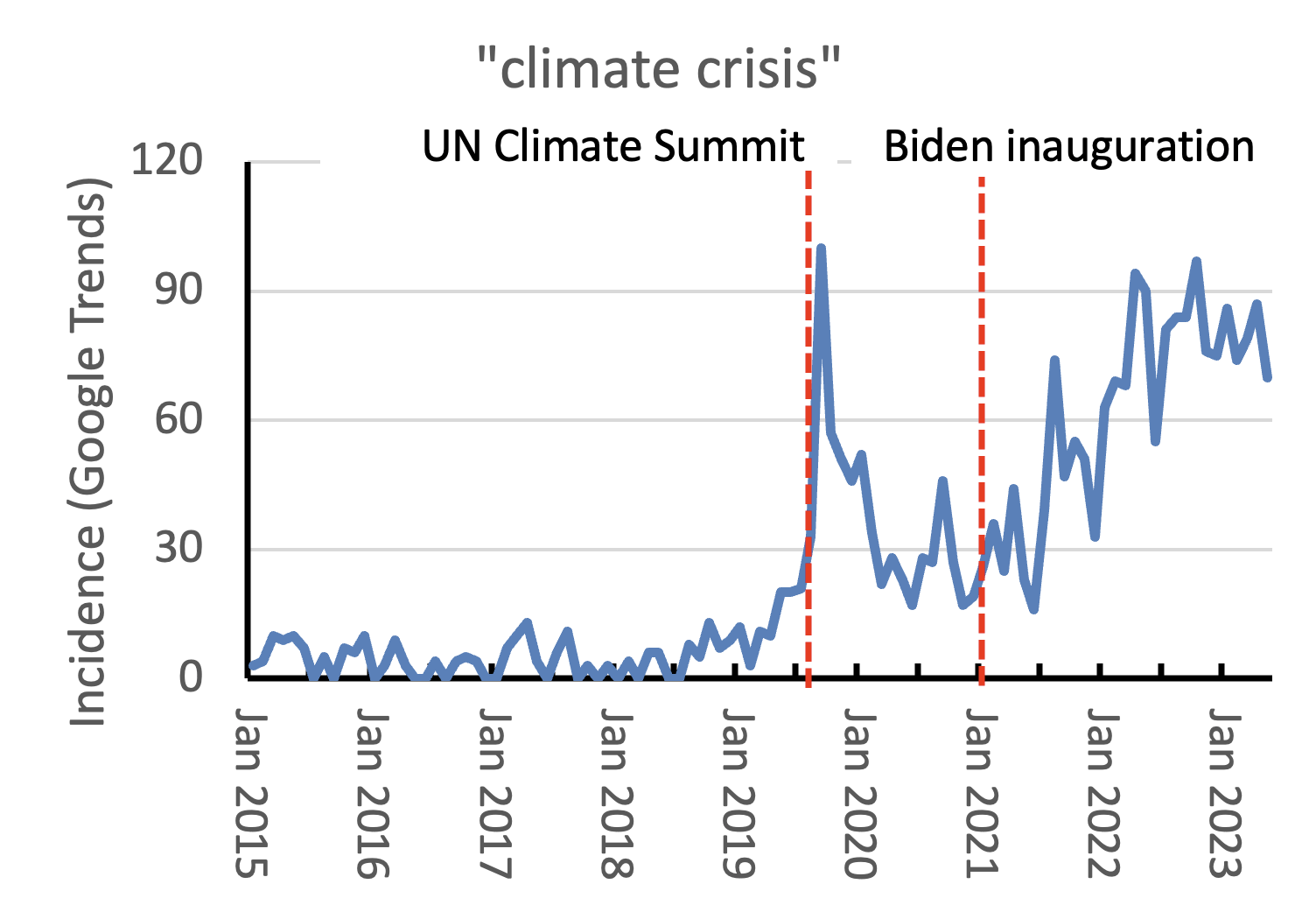
Figure 1: Incidence of the phrase “climate crisis,” 2015–2023
Once the Biden administration decided to declare war on fossil fuels, the phrase has been steadily on the rise (see Figure 1). Given that climate activist groups are feeding greenwashing money into news organizations, one has to ask: is there really a climate crisis in South Sudan?
That’s easy to check. Unprecedented flooding requires unprecedented rainfalls. Below is a chart of South Sudan’s mean annual rainfall (MAR) from 1901 to 2021, the latest year for which data are available from the World Bank:
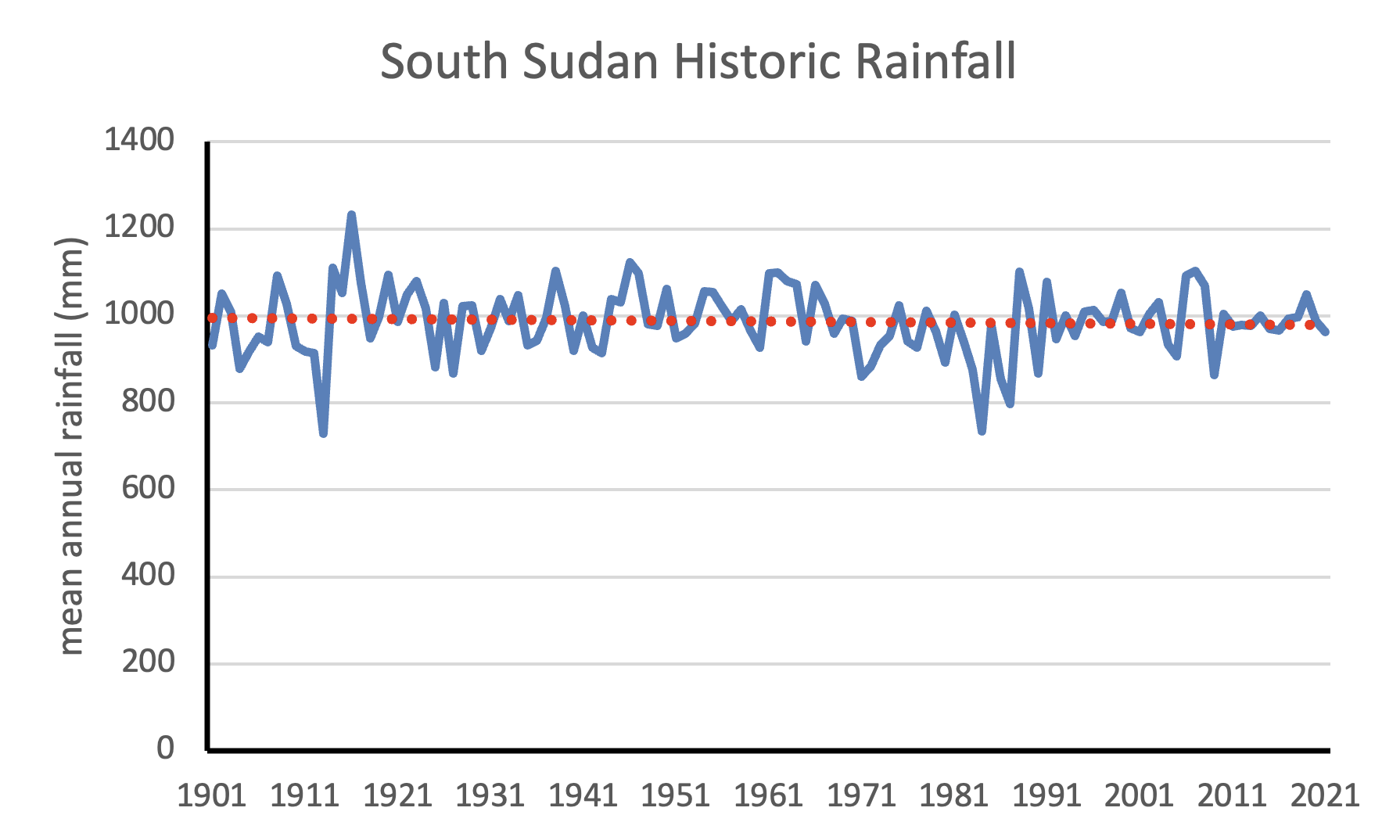
Figure 2: Mean annual rainfall in South Sudan, 1901–2021
It’s hard to see a pattern of unprecedented high rainfalls here. What is evident is a high degree of variability, roughly 200–300 percent around the average, which is typical for sub-Saharan Africa.
The WFP claims that several consecutive years of higher-than-normal flooding are to blame. Disruption of the year-to-year planting and harvesting of crops and the grazing of cattle herds has cumulated into malnutrition. Again, historical patterns of rainfall do not support this claim.
Below is a chart of monthly South Sudan rainfalls divided into twenty-year periods, or vicennials. Rainfalls are divided into a rainy season interspersed with a dry season. If climate change was producing exceptional year-to-year flooding, it should be evident in consistently higher rainfalls in the 2001–2021 vicennial (orange bars) compared to previous vicennials. Such a pattern is not evident from the data.
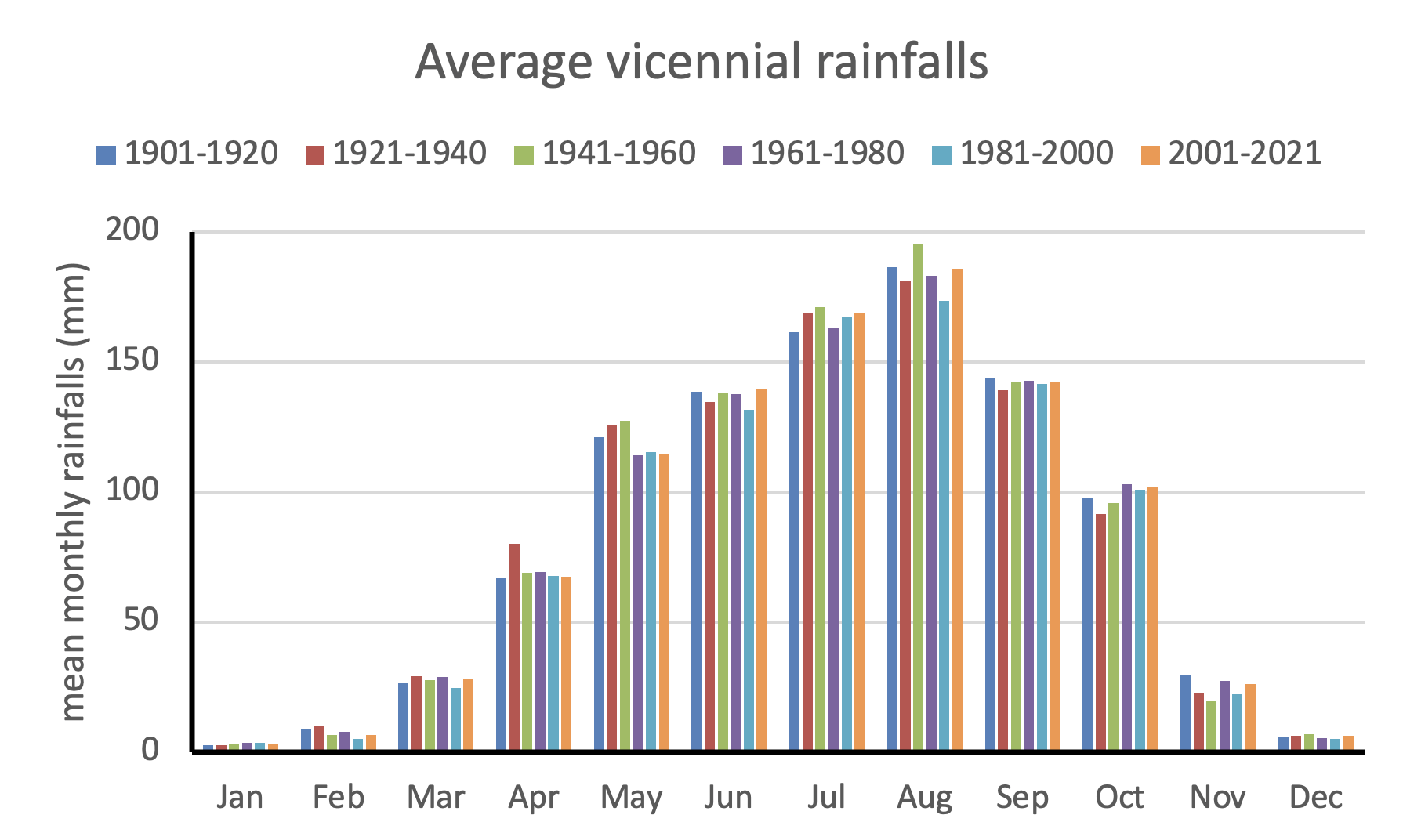
Figure 3: Mean monthly rainfall by vicennial, 1901–2021
Perhaps more complex patterns of rainfall can explain the flooding? The El Niño–Southern Oscillation, for example, imposes complex variations on world climate. In subtropical and equatorial latitudes, where South Sudan is situated, this can mean multi-year periods of drought interspersed with multi-year periods of exceptional rainfall. Historic patterns of rainfalls in South Sudan are consistent with this, varying with a longer period cycle of seven to eight years, combined with a still longer-term cycle of twenty to twenty-four years. This means that some seven-year intervals may experience sequential years of intense rainfalls with extensive flooding, while other seven-year intervals may have sparse rainfalls and minor flooding. More to the point, one cannot credibly attribute consecutive years of intense flooding to climate change. The data simply do not support such a claim.
If the situation in South Sudan cannot be described as a “frontline of the climate crisis,” this does not mean there is not a humanitarian concern. If people are starving, it does not matter whether climate is the reason. Flooding, whether prolonged or not, can disrupt movements of people and goods, it can cause hardship, even food shortages. What, then, is the nature of food shortages in South Sudan?
Some context is in order. The country’s southern provinces are equatorial wet forest, which receives substantial rain and which produces a surplus of cereal grains. The northern provinces, where ABC News filmed, consists of semi-arid savanna, grading to the north into the Sahara Desert of Sudan. The northern provinces face a significant shortfall of cereal grains. Country-wide, cereal crop yields are up by 12–16% over last year, however. Widespread crop failure is therefore not the problem for South Sudan. What, then, is the problem?
The UN Food and Agriculture Organization (FAO) estimates the risk of famine with a ratio of population to projected crop yields: mouths to feed over projected food supply. According to the FAO, there are presently no provinces experiencing famine in South Sudan. The food situation is nevertheless “dire”: northern provinces face a “food emergency,” while southern provinces are in the less-serious “crisis” category. The WFP program David Muir featured was trying to build up local food stockpiles in the northern provinces to cover the projected shortage of grains. It’s a laudable goal.
It is not the “climate crisis” that is hindering their efforts, but a perfect storm of political disruptions, corruption, graft, and piracy. Beginning with the Sudanese civil war that led to the breakaway of South Sudan, roughly two million people were displaced to neighboring countries. In the last year, nearly 800,000 of those returned to South Sudan—800,000 more mouths to feed, in other words.
The population-churning did not stop with South Sudan’s independence. Ongoing political violence in the northern provinces has displaced 20,000 people internally. These have not been able to cultivate crops or herd cattle, further degrading the denominator of the FAO’s food-risk ratio. The redistribution of internally produced crops and food aid convoys from the United Nations and various NGOs is hampered by poor roads, graft, corruption, hijacking, looting, and innumerable government and mercenary checkpoints that drain away hundreds of millions of dollars from organizations like the WFP. South Sudan now ranks among the most dangerous places in the world for aid workers, leading the WFP in March to suspend its operations in South Sudan. To add insult to injury, fiscal mismanagement by the South Sudan government has produced a sharp doubling of food prices. Don’t expect foreign investment to improve matters either: the State Department ranks South Sudan as one of the worst investment climates in the world.
Even so, one looks at the plight of South Sudan and weeps. Starvation is starvation, no matter what the cause, and aren’t we duty-bound to act? Perhaps. Some further context is called for.
South Sudan’s northern provinces lie along the floodplain of the White Nile River, which ebbs and surges with the seasonal rainfalls. During the wet season, the White Nile spills out onto this vast floodplain to create the Sudd, one of the world’s largest ephemeral swamp wetlands, and a candidate World Heritage site. David Muir’s report was from the Sudd in flood.
The people who live in the Sudd are subsistence farmers and pastoralists. They settle patches of ground that may be only a few meters higher in elevation than the flat surroundings. There, they establish permanent villages and cultivate crops. During the dry season, people disperse as they move their cattle around for grazing. When the floods come, cattle and their herders retreat back to their settlements, which are now low islands. Once the flood recedes, the people disperse again. It is a habitation pattern that has existed in this region for millennia. In fact, the annual flooding of the Sudd is essential to their way of life, not a hindrance to it. The local people know how to live in this environment, their skills sharpened by millennia of experience.1 Arguably, they will do so again.
ABC News and the WFP distort this rich indigenous knowledge or leave it out altogether. There is one scene in the ABC report, for example, of a woman chest-deep in water harvesting bulbs of water lilies. A Google search on “water lilies south sudan” brings up numerous articles with indignant titles like “Desperate for food, mothers turn to water lilies.” Yet, water lily bulbs have long played a role in tiding the people of the Sudd over periods of food shortage, as they have done in many cultures worldwide. It is not Panglossian naivete to note that water lilies would not be available for harvesting in the Sudd without the flood. Nor would the influx of fish that come in with the rising waters, which supplements the locals’ diet. The Sudd is also home to several species of trees that supply nuts and fruits, and these, too, depend upon the Sudd’s relatively shallow water tables. Exploiting these transient, food-rich sources has been key to sustaining the people of the Sudd during times of food scarcity.
A clip from the ABC News report belies another claim: that cattle are starving because they cannot graze, and as the cattle die, the people die as well.
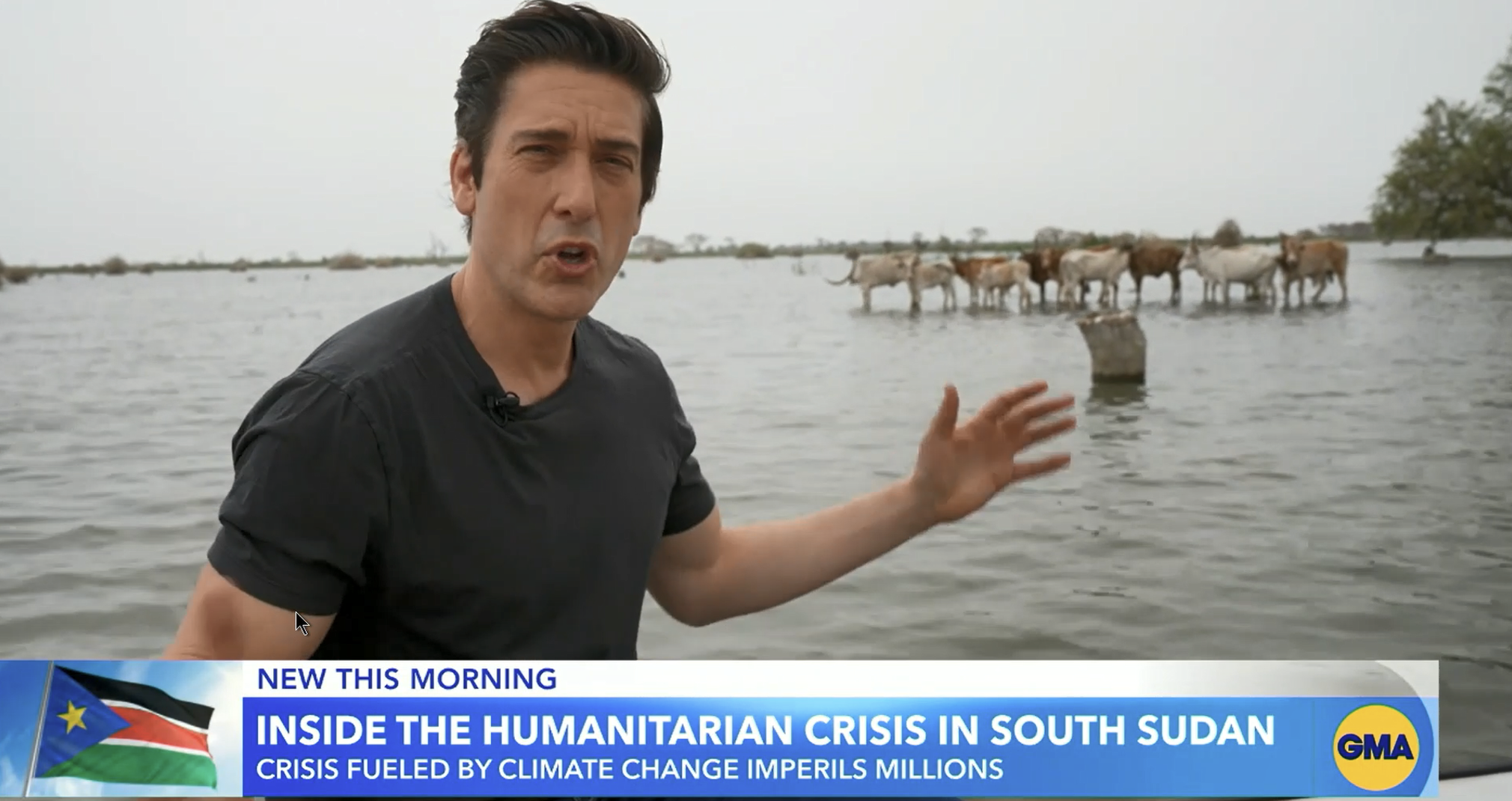
Behind David Muir stands a group of cattle he describes as “nothing but skin and bones.” They don’t look emaciated. Furthermore, the water they are standing in comes up only to mid-hoof. They can easily wade to the stands of trees and vegetation behind them, which provide ample forage for cattle, tiding them, too, over the wet season. If the waters become deeper, cattle can swim.
In short, ABC News and the WFP are engaged in a transparent campaign of greenwashing, manipulative and emotive handwringing over a non-existent “climate crisis.” Why the greenwashing? The simple answer: there is a great deal of money at stake. The WFP is facing deficits of several hundred million dollars. The WFP and other humanitarian and relief NGOs are also major employers in South Sudan, and so present easy targets for graft and other economic crimes. The “climate crisis” is the poster child for hopelessly incompetent United Nations programs. Northern-hemisphere elites have adopted climate change as their path to riches and power—all of it fronted by a phony narrative of a “climate crisis.”
That money’s not going to move by itself.
1 E.E. Evans-Pritchard. 1940. The Nuer: A Description of the Modes of Livelihood and Political Institutions of a Nilotic People. Oxford: Clarendon Press.
Image: Adobe Stock
I think it’s more decent people belabored by a corrupt ruling class.
Isn’t the corrupt ruling class the problem in much of Africa?
And it’s not just El Nino — there are slight changes in the Earth’s orbit caused by other planets, comets, whatnot. But this is ignored….
Africa certainly has its own corrupt ruling elites, long mixed up with tribalist politics. The green elites have introduced another wrinkle through redistribution of climate change monies. In Namibia, where I have worked for many years, greenhouse monies provide an influx of foreign capital which can amount to hundreds of millions of dollars. For this money, Namibia is expected to forego development of its own rich fossil fuel resources, and its nuclear power sector in favor of solar and wind. This for a country that produces 0.003% of the world’s greenhouse gases, Needless to say, it is government that gets rich, while forgoing the economic development that Namibia’s people need. Afrcian leaders have begun to push back slightly against this form of green colonialism, but there is an awful lot of money floating around,
Thank you. All I knew about South Sudan until now was, is a wonderful country run by good people, which broke away from a terrible country run by bad people. I got this from the media. Now I have another reason to distrust them.